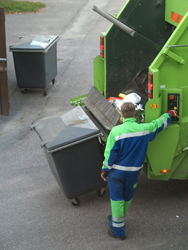Best ways to collect urban waste
Project partners drew up a series of recommendations following an analysis of best practice. These included using a range of different approaches for transporting waste in urban areas rather than applying a single solution. In addition, spatial planning and waste transport planning should cooperate to determine the best locations for landfills and incinerators. The investigation highlighted the need for local authorities hiring waste disposal contractors to ensure that environmental impacts are kept to a minimum. It was also suggested that Member States should make national and regional government work together with private operators to develop sustainable solutions. Promoting the use of environment-friendly vehicles (EFV's) and equipment was another priority. The most effective way is to target operators who possess a large fleet of vehicles, thereby quickly and simply reducing a major negative impact. Studies also revealed that the greatest improvement can be achieved through the use of compressed natural gas (CNG) fuel. Electric vehicles, however, are most effective when operated in a small built-up area such as a historical city centre. High-tech control and enforcement schemes for freight transport are best suited for large heavily built-up areas, but a manually operated system is more cost-effective in small urban centres. However, it is important for both schemes that all stake-holders are correctly informed so that they can gain a proper understanding of new initiatives right from the start. Any scheme that seeks to restrict city access is doomed to failure if it does not take into consideration the needs of its users. If they are engaged during the early planning stages the chance of success for an access restriction scheme is much greater. Therefore, a carefully thought out public information campaign is vital to the scheme's success. Recommendations by the Beststufs II project can not only reduce the impact of freight transport on the environment, they can also improve the quality of life for urban dwellers. Faster deliveries will also help boost business, increase employment and benefit Europe's economy.



